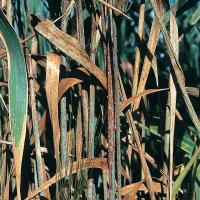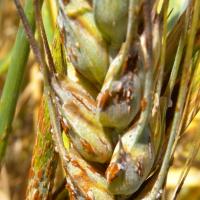Yield losses
In Western Australia (WA), wheat stem rust (Puccinia graminis f.sp. tritici) typically causes losses of 10-50%, but this can increase to up to 90% when it occurs in early spring and is not controlled. Widespread outbreaks are very damaging but rare. Regional outbreaks are more common, causing losses over limited areas. Stem rust is adapted to warmer conditions than leaf or stripe rusts and is usually detected later in the season (mid-spring) than leaf or stripe rusts. Disease severity can increase extremely rapidly once a crop is uniformly infected.









